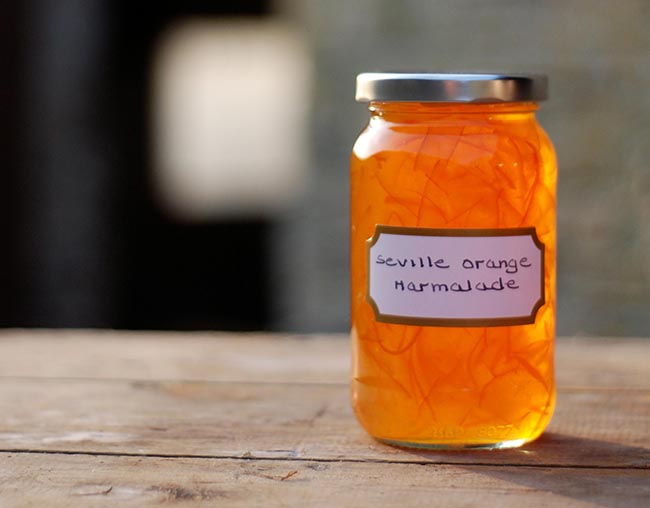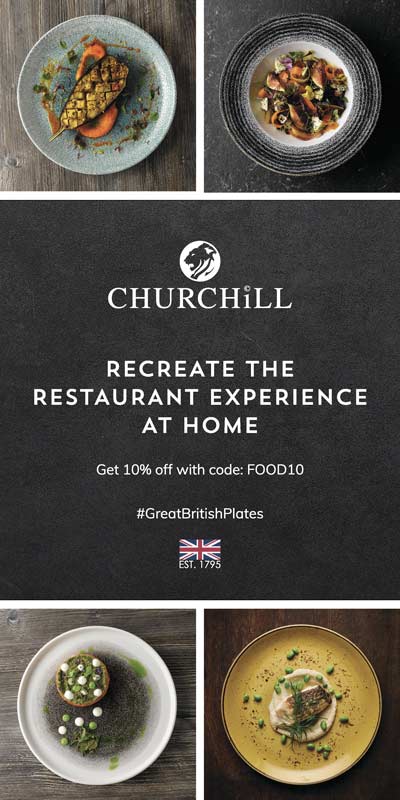Seville marmalade
Seville oranges are at their best in January and February so make the most of them with this delicious marmalade recipe

Somerset preserver Vivien Lloyd shares her recipe for seville orange marmalade
Makes 2.25kg
- Seville oranges 675g
- Lemon 1
- Granulated, cane sugar 1.4kg
- Water 1.75 litres
- Juice the oranges and pour the juice with the water into a large, lidded pan with a capacity of 7 litres.
- Remove the inner membranes and pips from the oranges. Do not remove the pith from the oranges.
- Juice the lemon and add the juice to the pan.
- Put the orange membranes into a food processor or mini-chopper and chop finely. Put the chopped membranes, and any pips into a 33 cm x 33cm piece of thin cotton muslin. Tie this up with string and add to the pan.
- Slice the oranges and add the peel to the pan- thinner peel releases more pectin during cooking than thicker. If possible, leave the pan overnight to allow the fruit to soak.
- Next day, bring the lidded pan to boil, turn down the heat and simmer very gently for two hours. The peel should be tender and the contents of the pan reduced by a third.
- Remove the muslin bag and squeeze the liquid from the bag back into the pan through a sieve, using a large spoon.
- Warm the sugar in a low oven. Add the sugar to the pan and dissolve. Bring to a rolling boil and test for a set after 7 minutes.
- Leave to cool for 5 minutes. Remove any scum from the surface of the marmalade.
- Pour into sterilised jars and cover with new twist top lids. Alternatively, seal the jars with waxed discs and when cold, apply cellophane covers secured with elastic bands.
Recipe from Vivien Lloyd’s book First Preserves – Marmalades
Supported by
You will need
- Seville oranges 675g
- Lemon 1
- Granulated, cane sugar 1.4kg
- Water 1.75 litres
Method
- Juice the oranges and pour the juice with the water into a large, lidded pan with a capacity of 7 litres.
- Remove the inner membranes and pips from the oranges. Do not remove the pith from the oranges.
- Juice the lemon and add the juice to the pan.
- Put the orange membranes into a food processor or mini-chopper and chop finely. Put the chopped membranes, and any pips into a 33 cm x 33cm piece of thin cotton muslin. Tie this up with string and add to the pan.
- Slice the oranges and add the peel to the pan- thinner peel releases more pectin during cooking than thicker. If possible, leave the pan overnight to allow the fruit to soak.
- Next day, bring the lidded pan to boil, turn down the heat and simmer very gently for two hours. The peel should be tender and the contents of the pan reduced by a third.
- Remove the muslin bag and squeeze the liquid from the bag back into the pan through a sieve, using a large spoon.
- Warm the sugar in a low oven. Add the sugar to the pan and dissolve. Bring to a rolling boil and test for a set after 7 minutes.
- Leave to cool for 5 minutes. Remove any scum from the surface of the marmalade.
- Pour into sterilised jars and cover with new twist top lids. Alternatively, seal the jars with waxed discs and when cold, apply cellophane covers secured with elastic bands.
Recipe from Vivien Lloyd’s book First Preserves – Marmalades
You may also like








